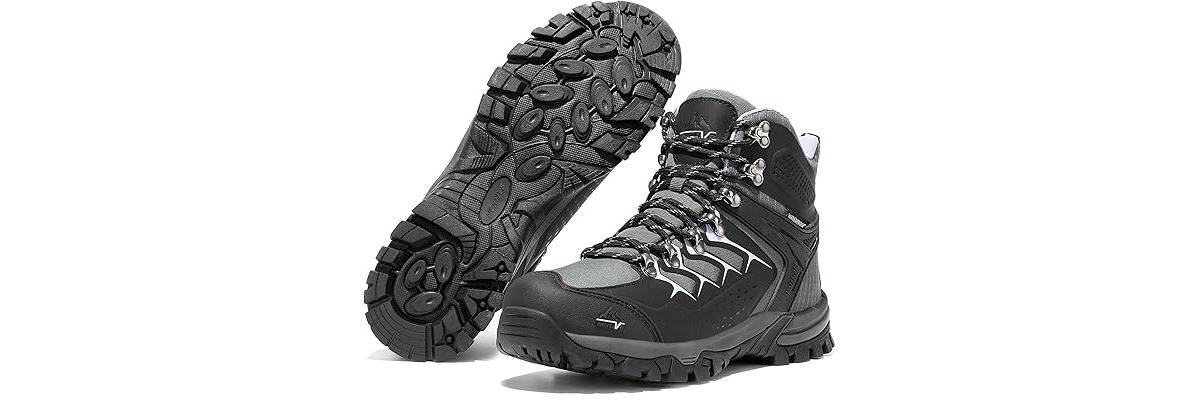Mount Kenya and Kilimanjaro
packing list
Introduction
Preparing for an expedition to climb Mount Kilimanjaro or Mount Kenya requires careful planning and consideration of essential climbing gears and Equipments. Mount Kilimanjaro and Mount Kenya present unique challenges due to their high altitudes and varied climates across the different climate zones. Packing effectively ensures not only comfort but also safety throughout the trekking expedition. From specialized clothing designed to withstand extreme temperatures to crucial equipment like sturdy hiking boots and reliable sleeping bags, each item serves a pivotal role in the success of your ascent. Proper packing list is key to your successful summit, keeping you warm and dry and well protected from different climate changes on Mount Kilimanjaro and Mount Kenya.
Here is a complete head-to-Toe ultimate guide on what gears you need to pack for Mount Kilimanjaro and Mount Kenya climbing expedition.


A Complete Mount Kenya and Kilimanjaro Packing List
Headwear

A wide-brimmed hat provides protection from the sun, shielding your face and neck from harmful UV rays. Look for breathable materials that wick away moisture to keep you cool and Comfortable, Sun hats made from quick drying materials are ideal for climbing mount Kilimanjaro and Mount Kenya where weather conditions keep fluctuating , remember an easily foldable materials is a plus since they can be easily packed and folded without losing their shape, making them ideal for travel and outdoor adventures.

A warm hat made of woollen material comes in handy especially during the evenings and on summit night. To ensure comfort and safety, it’s wise to pack at least two warm hats. By rotating between them, you can keep one dry and free from sweat for the summit attempt. Wet hats can chill the head, compromising your warmth and comfort, so keeping one clean and dry is essential for the summit attempt night.

A Balaclava, a versatile piece of headwear, finds its roots in the Battle of Balaclava, a historic conflict that took place in 1854 during the Crimean War. Named after the town of Balaclava in Crimea, this garment was originally worn by soldiers to provide protection against the harsh elements of warfare. Fast forward to modern times, the balaclava has become a staple accessory for outdoor adventures including climbing Mount Kilimanjaro and Mount Kenya. It is designed to cover the head, neck, and often parts of the face, offering protection against the biting cold and strong winds encountered at high altitudes.

A neck gaiter, also known as a Buff from the popular brand producer, is a seamless tube of fabric designed to provide warmth when worn around the neck, face, or head. It’s usually crafted from lightweight, stretchy materials like thin wool or synthetic wicking textiles. Its versatility allows it to be worn in various styles, making it an essential component of your essential gear for climbing Mount Kilimanjaro.
Tops

Opt for lightweight, moisture-wicking fabric to keep sweat away from your body, preventing chafing and discomfort. Long-sleeved options offer added protection from the sun and elements.

Choose comfortable thermal base layer made from breathable fabrics either synthetic or merino wool.

A lightweight, breathable jacket protects against wind and light rain without causing overheating. Look for one with ventilation options like underarm zippers for added comfort.

A loose protective outer garment made from waterproof material, typically plastic or nylon, designed to be worn over the body to shield against rain and moisture. It usually has an oversized fit to cover the wearer and often includes a hood to protect the head as well. Rain ponchos are lightweight, compact, and easy to carry, making them convenient for Mount Kilimanjaro and Mount Kenya climb expeditions.
Jackets

A proper dawn jacket for climbing mount Kilimanjaro or mount Kenya should be well insulated and water proof, puffy and warm enough to withstand up to Negative zero degrees temperatures a down jacket but that doesn’t mean it should be bulky, opt for easy to pack dawn jackets Ensure the jacket has an attached hood for wind protection, and features like hand pockets, a chest pocket, and inside pockets for carrying essentials. Look for jackets that can be packed into their own pocket for easy carrying. Your jacket should fit loosely enough to layer over other clothing, including a hard shell, without being too tight.

Softshell jackets should be water-resistant, breathable, with windproof features. A perfect soft jacket for Mount Kilimanjaro or Mount Kenya climbing should allow sweat and heat to escape while keeping out wind and light rain, since soft jackets are not suitable for heavy rains they are suited as an under layer, opt for flexible softshell material for excellent freedom of movement.

A lightweight, breathable jacket protects against wind and light rain without causing overheating. Look for one with ventilation options like underarm zippers for added comfort.
Hiking Pants

Stretchable Innerwear Thermal Body Warmer also referred to simply Skin Tight is the first layer you require as a first layer, ideally the johns should be tight yet comfortably fitting allowing no gaps between the fabric and your body in order to stay reasonably warm even on Kilimanjaro’s summit where temperatures can fall to minus zero degrees.

Fleece pants are used as an additional insulating layer on cold outdoor expeditions, while dressing up for Mount Kilimanjaro or Mount Kenya climbs we recommend packing at least two high quality light weight fleece trousers, fleece trousers should be worn on top of long johns but under water proof/rain trousers in order to stay perfectly warm and dry even in extreme Kilimanjaro or mount Kenya weather conditions.

Convertible pants with zip-off legs offer versatility, allowing you to adapt to changing temperatures or terrain. Choose quick-drying, durable fabric with plenty of pockets for storing essentials.

Rain pants should be water resistant and worn as the top most layer, pack two pairs light wait waterproof rain trousers these should always be packed in your day pack.
We recommend Gore-Tex full-zip, windproof, breathable, and water-resistant trousers, this makes it easy to remove the pants whenever necessary without having to remove your shoes.
Footwear

Sturdy, supportive Hiking boots with good traction is essential for Climbing Mount Kenya and Mount Kilimanjaro terrains. Opt for waterproof or water-resistant options to keep your feet dry in wet conditions, and break them in before your Mount Kilimanjaro or Mt Kenya climbing expedition to prevent blisters.

Remember to bring along sneakers for wearing while at your tent or evenings at dinning Mess tent.

Invest in moisture-wicking thick socks made from merino wool or synthetic materials to keep your feet dry and blister-free. Consider wearing a thin liner sock under thicker hiking socks for added comfort and blister prevention. Most importantly they should be well fitting and comfort in your hiking boots.

Gaiters are worn over your boots to keep debris like rocks, dirt, and snow out of your shoes, preventing discomfort and potential injury. Choose lightweight, breathable gaiters designed for hiking.

Walking poles provide stability and reduce strain on your joints, especially when navigating steep or uneven terrain. Look for adjustable poles with ergonomic grips and shock-absorbing features for maximum comfort.
Equipments

On Mount Kenya and Mount Kilimanjaro, a sleeping pad is essential for insulation against the cold ground and cushioning on uneven, rocky terrain, ensuring a warm and comfortable sleep.

A high-quality sleeping bag is vital for staying warm during cold nights on Mount Kenya and Mount Kilimanjaro. opt for a sleeping bag rated for sub-zero temperatures, preferably down-filled for optimal warmth-to-weight ratio, and ensure its lightweight and compressible for easy packing

A head torch is essential for navigating in the dark during early morning summit attempts and nighttime camp activities on Mount Kenya and Mount Kilimanjaro. Carrying extra batteries ensures your head torch remains functional throughout the trek, crucial for safety and visibility in the remote, high-altitude environment.

Bringing a camera with spare batteries is important for capturing the stunning landscapes and memorable moments on Mount Kenya and Mount Kilimanjaro. Extra batteries are crucial due to the cold temperatures, which can drain battery life quickly, ensuring you don’t miss any photo opportunities.
MOUNT KILIMANJARO AND MOUNT KENYA CLIMB GEARS RENTAL.
Welcome to the Amet Adventures Climbing Mount Kilimanjaro and Mount Kenya gears Rental Portal!
We provide top-notch trekking equipment for both our loyal clients who have booked tneakereks with us to Mt Kenya and Mt Kilimanjaro, and external adventurers seeking to minimize expenses for climbing Mount Kilimanjaro or Mount Kenya through gear rentals.
Our gear is meticulously curated to cater to treks on Mount Kenya and Mount Kilimanjaro ensuring you’re equipped for different terrains or climate on East Africa’s highest mountains.
Our streamlined process operates in a few simple steps:
1. Fill out our convenient Gear rental application form.
2. Receive an email confirming receipt of your request.
3. Await confirmation from us regarding availability and the final cost, typically within 24 hours of submission.
4. Make payment, including a 20% security deposit (refundable upon return of all equipment).
5. Advice the delivery location within Nairobi or in Kilimanjaro Moshi region
6. Return the equipment within 2 days of your return from your Mt Kenya or Kilimanjaro trek expedition.
With Amet Adventures, your next climb on Mt Kilimanjaro or Mt Kenya just got intresting. Explore the East African Mountains with confidence, knowing you have quality equipment backing your climbing expedition every step of the way.
Why rent your trekking gears?
Travel light: A trip to Mt Kenya or Mt Kilimanjaro involves a day or 2 hotel accommodations, prior and post the actual hike. This means there are more items you may need to pack apart from the hiking essentials. You can consider hiring all the gears you require in order to reduce the luggage weight as you travel. You can always leave that extra suitcase or duffel at the hotel where you will be staying until you return.
Amet Adventures provide a hassle-free solution for hiring specialized Head-to toe climbing gears from both our Nairobi and Kilimanjaro outlets, Ideal for your Mt Kenya climb and Mount Kilimanjaro climb as well as any outdoor activities in the region.
GEAR RENTALS TERMS AND CONDITIONS.
I. Equipment Availability and Reservation:
• Our hire kit is subject to availability and limited in quantity we recommend placing your gear order at least 14 days prior your Mt Kenya or Kilimanjaro trek date.
• To secure your desired trekking gears, please fill the rental form and we will revert to you promptly.
II. Security Deposit:
• A 20% security deposit is required for every Order refundable upon equipment return.
• We reserve the right to withhold all or part of the deposit for reasons including loss, damage, misuse, or unauthorized alterations to the equipment.
III. Withholding Security Deposit:
The security deposit serves as a safeguard against potential losses or damages to the hired equipment. We may withhold all or part of the deposit to cover costs incurred due to the following reasons:
1. Loss or Damaged Equipment: In the event of lost or significantly damaged equipment, we may use a portion or the entirety of the security deposit to cover the replacement or repair costs.
2. Late Equipment Return: Failure to return the equipment within 3 days of your expedition finish date may result in a deduction from the security deposit to compensate for the extended rental period.
3. Inappropriate or Misuse of Equipment: If the equipment is used inappropriately or subjected to misuse, leading to damages beyond normal wear and tear, we reserve the right to withhold a portion of the deposit to cover repair or replacement expenses.
4. Cancellation within 24 Hours of Departure: Cancellation of your booking within 24 hours of the departure date may result in the forfeiture of a 100% of the security deposit to cover administrative costs and potential loss of rental income.
5. Unauthorized Alterations or Modifications: Any unauthorized alterations or modifications to the equipment that compromise its functionality, safety, or integrity may lead to deductions from the security deposit to rectify the alterations or replace the affected components.
It is our responsibility to ensure that the hired equipment remains in excellent condition for future adventurers. By adhering to these guidelines, we aim to maintain the quality and reliability of our gear for all our customers’ outdoor pursuits.
IV. Equipment Collection and Return:
• Gears will be available for collection or dispatch 3-4 days prior to your expedition date and once a refundable deposit is received via our bank account or other advised means of payment upon placing an order.
• Upon return, ensure all items are included, reasonably clean, and well-maintained to avoid loss of deposit due to damage.
• Equipment must be returned directly to Amet Adventures and not passed on to any third party unless instructed otherwise.
Please Note: Please indicate your size (UK, EU,US ) when placing your order, you will also have a chance to try on the boots or clothing upon delivery to ensure you get the right fit.
Thank you for choosing Amet Adventures for your trekking gears hire in Nairobi and Kilimanjaro region. We’re committed to providing you with the best outdoor gears for your unforgettable Adventures on Mt. Kenya and Mt. Kilimanjaro!
Here’s a list of frequently asked questions (FAQs) regarding packing for Mount Kilimanjaro and Mount Kenya climbs:
1. What clothing should I pack for Mount Kenya and Mount Kenya climbs?
• Pack layers of clothing suitable for a wide range of temperatures, from hot at the base to freezing at the summits. Include moisture-wicking base layers, insulating mid-layers, and waterproof outer layers. Don’t forget gloves, a hat, and a buff or scarf for added warmth. Download a complete packing list here
2. Do I need crampons for Mount Kenya and Mount Kilimanjaro Climbs?
• Crampons are typically not required for climbing Mount Kilimanjaro or Mount Kenya, as they are non-technical hikes.
3. What about altitude sickness medication?
• Altitude sickness can be a concern when climbing high peaks like Kilimanjaro and Kenya. Consult with your doctor before the trip and consider bringing altitude sickness medication like Diamox as a precautionary measure.
4. Is it necessary to bring a sleeping bag and sleeping pad?
• Yes, a warm sleeping bag rated for freezing temperatures is essential, as nights on the mountains can be extremely cold especially at the summits falling up to -10 degrees. Please note a sleeping pad is provided on all Amet adventures treks, Learn more on our detailed guide on How to choose a perfect sleeping bag for Mount Kilimanjaro climb here.
5. Are trekking poles recommended?
• Trekking poles can be beneficial for both Mount Kilimanjaro and Mount Kenya climbs, especially on steep or uneven terrain. They provide stability, reduce strain on your joints56y, and help with balance, particularly during descents.
6. Apart from hiking gears and clothing’s what other personal items should I pack?
• Essentials include sunscreen, lip balm with SPF, insect repellent, personal toiletries, hand sanitizer, and any necessary medications, bring high-energy snacks like trail mix, energy bars, and chocolate to supplement your meals along the trail and keep your body energized.
7. How about a first aid kit?
• While our guides typically carry a basic first aid kit, it’s a good idea to bring your own with essentials like bandages, blister pads, pain relievers, and any personal medications you may need.
8. What brands of hiking gears do you provide?
• We provide high quality well known trekking brands such as the North face, vaude, Rei and many more, Please note While we aim to provide specific products/brands listed, we may offer suitable alternatives if necessary depending on availability at the time of reservation.
9. Balaclava or Buff? Which one should i pack for climbing Mount Kilimanjaro?
Understanding Each of these two hiking head wear will help you make an informed decision on what to include on your packing list.
1. Balaclava:
o Provides full coverage for the head, neck, and sometimes the face.
o Offers more warmth and protection in colder conditions, especially at higher altitudes where temperatures can drop significantly.
o Ideal if you prefer complete coverage and insulation for your head and face.
2. Buff (Neck Gaiter):
o Offers versatility as it can be worn around the neck, pulled up over the face, or used as a headband.
o Provides moderate warmth and protection but may not be as insulating as a balaclava, especially in extreme cold.
o Lightweight and easier to adjust according to changing conditions.
Considerations:
1. Temperature: If temperatures are expected to be very low, a balaclava might be more suitable for its added warmth and coverage.
2. Versatility: If you prefer a multifunctional piece that you can adjust throughout the day, a Buff is a great choice.
3. Layering: You might also consider layering options. For example, wearing a Buff around your neck and a lightweight balaclava or hat under your helmet or hood for added warmth.
Ultimately, it can be beneficial to pack both if space allows, as they serve different purposes and can be used depending on the weather conditions you encounter during your climb.
10. What features should you consider while selecting a Dawn jacket for climbing Mount Kilimanjaro or Mount kunya?
* Insulation: Down jackets are known for their excellent warmth-to-weight ratio, using duck or goose down to trap body heat effectively. This insulation is crucial for maintaining body warmth in the freezing temperatures encountered during the Kilimanjaro ascent.
* Water Resistance: Many skiing and technical down jackets are treated with a durable water repellent (DWR) finish to shed light rain or snow. This feature helps to keep you dry and comfortable even on Mount Kilimanjaro summit at 5895 meters above the sea level where temperature ranges around 21°F (-6°C) with extreme winds a proper dawn jacket should be able to withstand this conditions and keep you reasonably warm.
* Wind proofing: Jackets designed for high-altitude climbing often include windproof materials or features such as adjustable hoods, cuffs, and hemlines to seal out cold drafts and wind chill.
* Easy to pack: Look for dawn jackets designed to be lightweight and compressible, allowing easy packing into a backpack when not in use.
* Fit and Comfort: The fit should be roomy enough to layer underneath but not excessively bulky, allowing for freedom of movement during physical activity.
